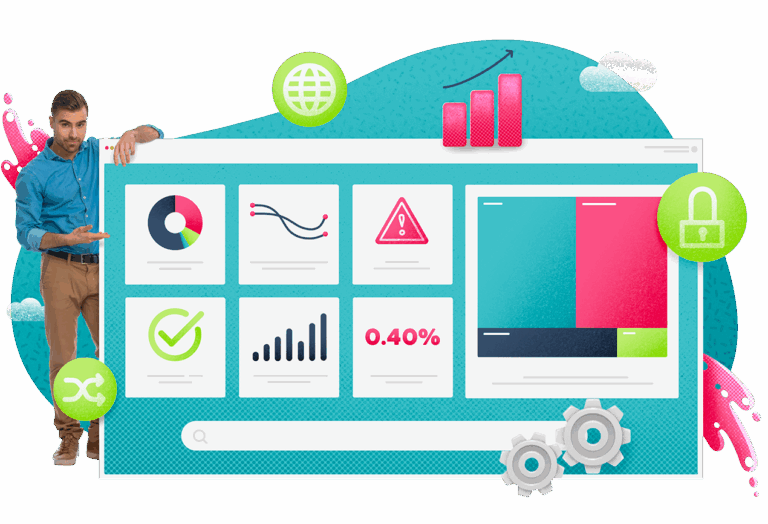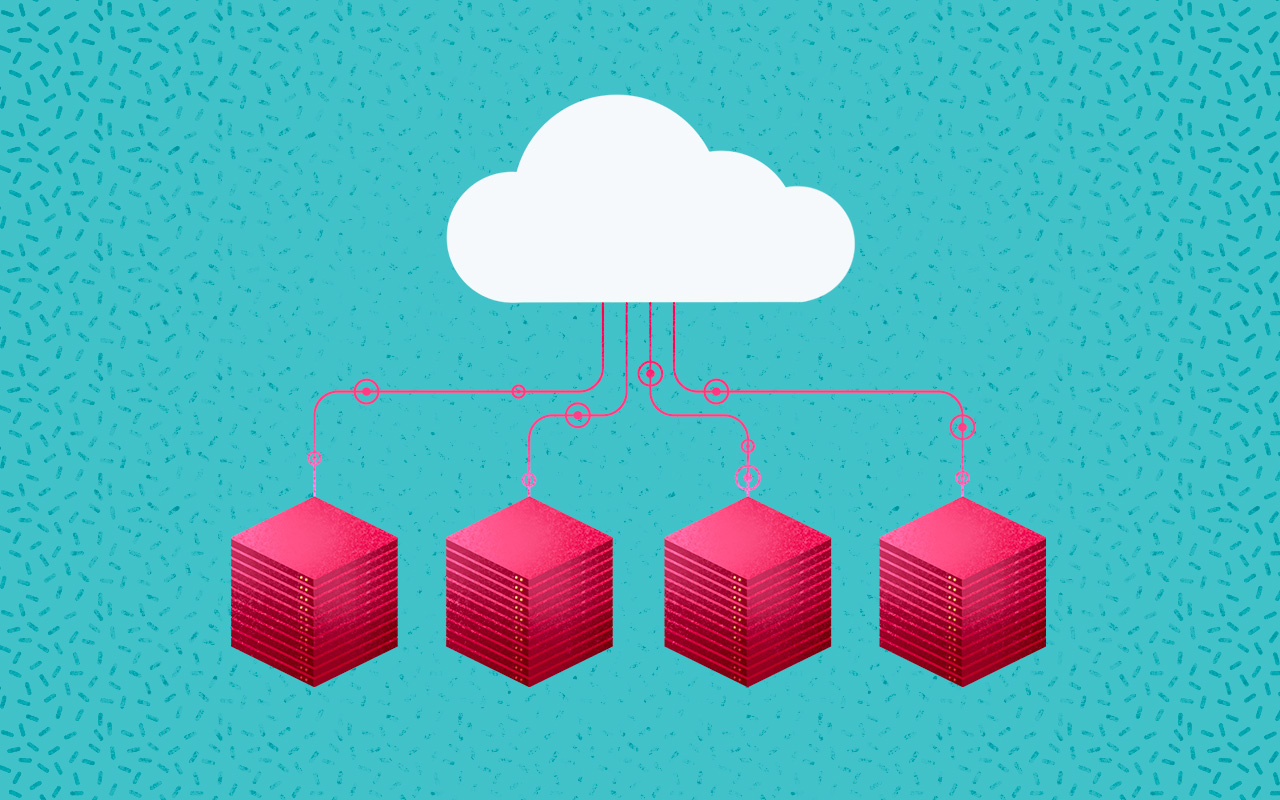Una Base de Datos de Gestión de la Configuración (CMDB, por sus siglas en inglés) constituye la columna vertebral de la Gestión de Servicios de TI (ITSM). Es un mapa integral de la infraestructura de TI que permite a las organizaciones gestionar los recursos tecnológicos de manera más eficiente, garantizar el cumplimiento normativo y tomar decisiones informadas.
A pesar de su demostrada importancia, muchas organizaciones no logran explotar todo el potencial de su CMDB, y esta herramienta corre el riesgo de pasar de ser un recurso estratégico a una fuente de frustración e ineficiencia. La realidad es que tener una CMDB mal utilizada o no adaptada a las necesidades del negocio puede ser peor que no tener ninguna.
Los datos inexactos u obsoletos conducen a decisiones erróneas, ralentizan la resolución de incidencias y reducen la satisfacción del usuario. Sin embargo, cuando se utiliza y mantiene adecuadamente, una CMDB simplifica las operaciones de ITSM y ofrece innumerables beneficios.
Comprendiendo el Rol de la CMDB
Fundamentalmente, una CMDB funciona como un centro centralizado para almacenar y organizar información detallada sobre los elementos que componen un entorno de TI. Estos elementos, tanto tangibles como intangibles, respaldan la prestación de servicios y la estabilidad de la infraestructura.
Componentes Clave de una CMDB
- Elementos de Configuración (CI): son entradas únicas que representan recursos o servicios de TI, ya sean físicos o lógicos. Cada CI se cataloga con atributos distintivos como versión, propietario y estado en su ciclo de vida.
- Interacciones sistémicas: una característica distintiva de cualquier CMDB eficaz es su capacidad para describir cómo interactúan entre sí los diferentes componentes.
- Metadatos descriptivos: información asociada a cada elemento, como el entorno de implementación, el calendario de mantenimiento o la propiedad. Los metadatos mejoran la usabilidad y permiten realizar consultas precisas.
Diferencias entre la CMDB y la Gestión de los Activos
Aunque a veces se solapan, la CMDB y los sistemas de Gestión de los Activos tienen objetivos distintos. La Gestión de los Activos se orienta al control financiero y contractual de los recursos de TI, como fechas de compra y depreciación, mientras que una CMDB está orientada a comprender el comportamiento del sistema y la arquitectura del servicio. Juntas ofrecen una visión completa de los recursos tecnológicos, pero es la CMDB la que proporciona la información necesaria para la resolución eficiente de incidencias y la planificación.
Con una CMDB bien gestionada, los equipos de TI obtienen información valiosa sobre cómo se conectan los componentes de la infraestructura, lo que permite tomar decisiones más informadas y lograr operaciones más fluidas. Este conocimiento fundamental es esencial para adoptar prácticas que permitan obtener un valor real de la inversión.
Implementación de la CMDB: Los Errores Más Comunes
Hoy en día, muchas iniciativas de CMDB no alcanzan las expectativas. Esta discrepancia rara vez se debe a tecnologías inadecuadas. Mucho más a menudo, es el resultado de desafíos operativos subestimados y una ejecución que no se ajusta con las necesidades reales del negocio. Reconocer los errores más comunes puede ayudar a las organizaciones a aprovechar todo el potencial de su CMDB adoptando medidas proactivas a tiempo.
Los motivos recurrentes por los que muchas organizaciones caen en la trampa de infrautilizar su CMDB son:
- Falta de objetivos claros: implementar una CMDB sin propósitos definidos lleva a una expansión descontrolada del alcance y a una sobrecarga de datos.
- Poca precisión e inconsistencia de los datos: los datos obsoletos o incompletos sobre los CIs socavan la confianza en la CMDB. Por ello, las auditorías regulares y la detección automatizada son esenciales.
- Mapeado excesivamente complejo: intentar mapear todos los CIs y relaciones desde el primer día añade complejidad innecesaria y aumenta el riesgo de errores.
- Procesos manuales propensos a errores: depender de actualizaciones manuales ralentiza a los equipos e introduce discrepancias.
- Integración con otros sistemas de TI: la conectividad fluida con herramientas de monitoreo, gestión de activos e ITSM a menudo requiere personalización avanzada, que demanda experiencia especializada.
- Gestión y responsabilidad insuficientes: sin una definición clara de responsabilidades entre equipos, el mantenimiento de la CMDB rápidamente queda descuidado.
- Desfase con la evolución del panorama de TI: con la proliferación de la nube, contenedores y microservicios, la CMDB debe adaptarse o corre el riesgo de quedarse obsoleta.
Reconocer estos problemas críticos es el primer paso para adoptar unas buenas prácticas de CMDB y mejorar su rendimiento. Abordándolos con una estrategia clara, herramientas robustas y la participación continua de los implicados, las organizaciones pueden sacar el máximo provecho de su CMDB mientras mejoran sus operaciones.
Buenas Prácticas para Maximizar el Valor de la CMDB
Para explotar completamente el potencial de una base de datos de gestión de configuración, las organizaciones deben ir más allá de simplemente implementar la herramienta y adoptar un enfoque estratégico. Las buenas prácticas de CMDB buscan que la base de datos sea precisa, relevante y esté alineada con los objetivos más amplios de TI y del negocio. Son fundamentales para maximizar su valor y evitar los errores más frecuentes.
Definir objetivos claros: empezar en pequeño y escalar gradualmente. Comienza con una articulación clara del propósito de la CMDB y los resultados empresariales esperados. Es la filosofía del «empezar poco a poco»: primero modelar solo los servicios, aplicaciones o servidores más críticos, demostrar su valor y luego expandirse a dispositivos de red, bases de datos y otros activos a medida que el proceso madura.
Establecer una gestión sólida, propiedad clara e involucramiento de las partes interesadas o stakeholders: la gestión es la piedra angular de una CMDB confiable, pero debe ir más allá de las operaciones de TI. Si la base de datos ha de reflejar las verdaderas prioridades de la organización, es esencial designar responsables de la gestión de datos, propietarios de servicios y gestores de la CMDB, e involucrar activamente a seguridad, finanzas y áreas de negocio.
Automatizar la recolección y actualización de datos: reemplazar la entrada manual propensa a errores por herramientas de detección e integración automáticas que identifiquen los CIs y actualicen atributos y estados del ciclo de vida en tiempo real. Es buena práctica conectar la CMDB con plataformas de monitorización, gestión de activos, proveedores de servicios en la nube y pipelines de DevOps para que los cambios se registren al instante.
Centrarse en la calidad de los datos: verificar, refinar, repetir. Evaluar la calidad de los datos no es una actividad puntual. Es necesario definir estándares de nomenclatura, clasificación y atributos obligatorios; validar los datos en cada punto de adquisición; y realizar auditorías programadas para detectar entradas obsoletas o conflictivas. Lo ideal es utilizar paneles de control para supervisar la integridad, precisión y puntualidad de los datos y actuar antes de que la calidad se deteriore.
Definir claramente las relaciones y categorías de los CIs: el verdadero poder de una CMDB reside en entender cómo interactúan los componentes entre sí. Las categorías y convenciones de nombres deben ser coherentes para hacer el modelo de datos intuitivo, fácil de consultar y listo para análisis de impacto.
Integración fluida con los procesos de ITSM: incorporar la CMDB en los flujos de trabajo de incidencias, cambios, problemas y versiones garantiza que cada ticket esté enriquecido con información actual de configuración y que los técnicos puedan evaluar de inmediato el impacto hacia arriba o hacia abajo.
Supervisar, medir y comunicar el rendimiento: monitorizar métricas como la precisión de los CIs, la frecuencia de actualización, la tasa de éxito de los cambios y el tiempo medio de resolución de incidentes permite medir con precisión el valor generado e identificar oportunidades de mejora.
Fomentar una cultura de mejora continua: alentar la retroalimentación, mantener la documentación actualizada, invertir en formación continua y revisar las políticas de gestión a medida que evoluciona la tecnología y el negocio significa, esencialmente, tratar a la CMDB como un sistema vivo en constante evolución.
Ventajas Reales de una CMDB Optimizada
Una CMDB está en la base de todo el ciclo de vida de la gestión de servicios. Cuando se rige por las prácticas que hemos descrito, la CMDB puede evolucionar para fortalecer cada aspecto del ITSM. Los beneficios son evidentes:
Supervisión integral y mayor eficiencia: al recopilar información detallada sobre la infraestructura y los servicios en un solo lugar, los equipos obtienen una visión de principio a fin fiable, útil para planificar mejoras o rastrear problemas. Identificar recursos subutilizados o duplicados ayuda a reducir el desperdicio y mejorar la eficiencia.
Respuesta más rápida ante incidencias: el mapa de recursos almacenado en la CMDB revela de inmediato qué aplicaciones o servicios empresariales se ven afectados cuando un componente falla. Esta visión amplia y detallada acelera la clasificación, reduce el tiempo de inactividad y mejora la satisfacción del cliente.
Mayor conciencia del riesgo ante cambios: antes de aplicar un parche o actualización, los equipos pueden evaluar en tiempo real el impacto del cambio, lo que reduce drásticamente la probabilidad de interrupciones inesperadas, permite flujos de trabajo más fluidos y una mejor preparación para auditorías.
Identificación más rápida de causas de origen: para problemas persistentes o recurrentes, las instantáneas históricas de configuración revelan patrones que se repiten y permiten identificar causas subyacentes. Esto permite implementar soluciones duraderas en lugar de respuestas ineficaces.
Lograr estos resultados requiere una gestión continua, colaboración interfuncional y un compromiso constante con la mejora. En este contexto, la tecnología puede ser un elemento habilitador extraordinario que apoye el cambio.
Preguntas Frecuentes
1. ¿Por qué muchas iniciativas de CMDB no alcanzan los resultados esperados?
Porque a menudo carecen de objetivos claros, la calidad de los datos es deficiente y la implementación es demasiado compleja o no está automatizada, lo que vuelve la CMDB ineficaz y difícil de mantener.
2. ¿Cuáles son las buenas prácticas para maximizar el valor de la CMDB?
Definir objetivos precisos, automatizar la recolección de datos, asegurar una buena gobernanza e involucrar a los stakeholders son estrategias fundamentales para obtener una CMDB útil y fiable.
3. ¿Cómo mejora una CMDB bien gestionada la Gestión de Servicios de TI?
Ofrece una visión completa de la infraestructura de TI, facilita la resolución de incidencias, mejora la gestión de cambios y permite tomar decisiones más informadas y oportunas.
4. ¿Cuál es la diferencia entre CMDB y Gestión de Activos?
La Gestión de Activos se centra en los aspectos financieros y contractuales de los recursos, mientras que la CMDB mapea el comportamiento, las relaciones y la configuración técnica de los componentes de TI.

